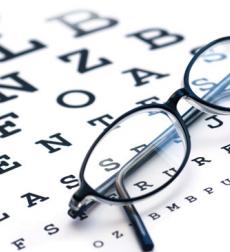What is farsightedness (hyperopia)?
Farsightedness (or longsightedness) is a problem of vision while viewing close objects, which is a very common eye problem. The official medical term is hyperopia. People with this disorder usually suffer from headaches, eye fatigue while reading, blurred vision, and they also need reading glasses.
Farsighted patients can focus on objects far away, but can not bring closer objects into focus. Farsightedness (hyperopia) occurs among those people whose eyeball is too short: the lenses project an image, and this ends up being focused behind the retina, instead of being focused directly on it.
What is the cause of farsightedness?
Flat cornea or lens can also cause problems of longsighted vision. Typically everyone is born with a 2,4 diopter farsightedness, but when people reach one year in age, this problem usually disappears. As the eyeball grows, the problem goes away, but in several cases hyperopia remains. Sometimes farsightedness develops in older age: the constantly working ciliray eye muscles lose strength, and the lenses get more rigid with the years.
How to cure far-sightedness
The exact treatment for far-sightedness depends on a couple of factors. Laser vision correction surgery is recommended up to +6 dioptres. For patients who have more serious refractive damage, laser correction is not an appropriate treatment. In these cases we use an ultrasound surgical technique, similar to the one used in the treatment for shortsightedness. It is called phacoemulsification. With this latest and state-of-the-art U.S. technology, patients can get back their perfect vision.
The ultrasound technique is a totally safe treatment with many advantages of which the most important one is the extremely short recovery period. The treatment is done by breaking the central section of crystalline lens into smaller pieces, and then this gets removed and replaced with an artificial corrective lens.
Treating problems of farsightedness is a quite simple intervention if a corrective lens is inserted in front of the eye’s lens. After surgery, when the light rays reach the retina, the added lens will form the correct image.
IntraLASIK or PRK surgeries are an option for adults who are slightly far sighted.




